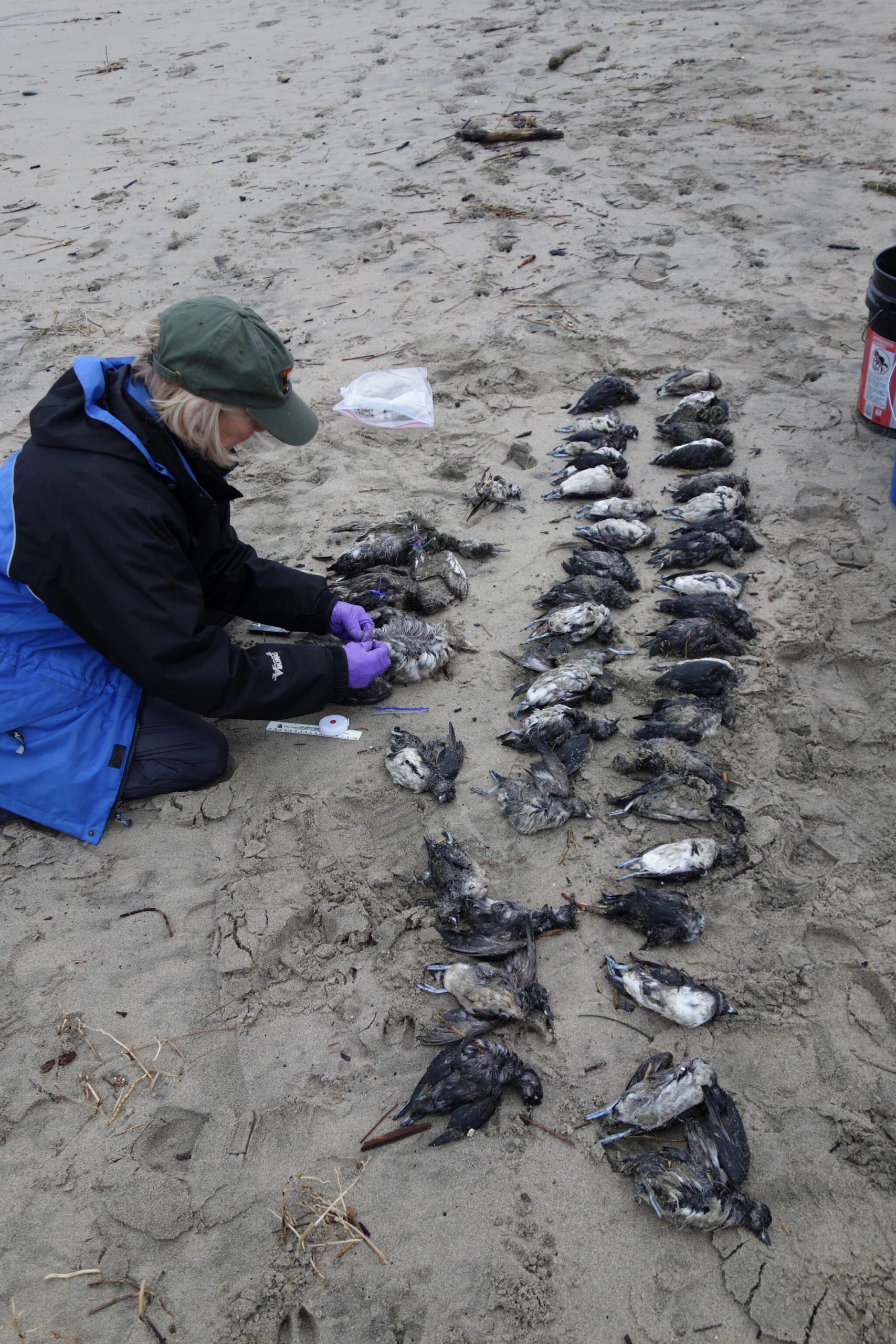By Toby Cooper
By 1998, Dr. Julia K. Parrish realized she was going to need help. Major help. The veteran University of Washington field biologist, then studying seabird colonies on Tatoosh Island Washington, had set her sights on a massive goal – establishing comparative baseline data on the 183-odd species of seabirds which inhabit the North American Pacific Coast. In a few short years, the resourceful Dr. Parrish secured grant funding, recruited scores of volunteers, and founded the Coastal Observation and Seabird Survey Team.
Today, the scope and reach of COASST span hundreds of miles, mobilizing nearly 1,000 participants to sample seabird mortality on some 450 individual beach and shoreline habitats from Mendocino, California to Pt. Barrow, Alaska. Parrish is grateful for the help.
‘Our program would be impossible without the dedication of surveyors like those that showed up for training sessions on Orcas and Friday Harbor,” said Parrish, adding that, “The San Juans COASSTers can’t be beat!”
According to Parrish, islanders don’t see loads of carcasses on any individual survey, but they keep “going and going.” They help establish the baseline record of beachcast marine birds against which we can compare large-scale mortality events in the region. She even remembered when “San Juan COASST’ers first started finding Rhinoceros Auklets on the south end of San Juan and Lopez Islands back in 2016. Because we had many years of baseline data, we knew that even a handful of birds spelled disaster.”
With COASST’s operations focused on the US North Pacific and Alaskan coasts, companion projects exist to cover Canada and Southern California. Birds Canada conducts beached bird surveys in British Columbia, including Vancouver Island. Two sister organizations operate South of Mendocino: Beach Watch (north/central California) and BeachCOMBERS (central/south California). The latter runs surveys as far south as San Diego.
COASST is currently working on a joint publication with the California partners on the troubling trend of marine heatwaves, to be issued later this year.
Expanding their mission, COASST recently asked all volunteers to document “marine debris” on their assigned beaches in addition to seabird data.
Adding marine trash to COASST’s volunteer agenda caught the attention of San Juan County’s Solid Waste Coordinator, Katie Fleming, who sees potential for collaboration. Fleming welcomes “any opportunity to better understand what debris is being found on our shorelines,” adding that because COASST volunteers regularly walk beaches, their data collection on marine trash could help us determine priority beaches to target during bi-annual Great Islands Clean-Up events.
By collaborating with community members, natural resource management agencies, and environmental organizations, COASST seeks to translate long-term monitoring into effective marine conservation solutions. San Juan County’s eco-friendly citizens stand ready to participate in part because the county’s 400-odd rocky islands and 478 miles of coastline are interspersed with discrete pocket beaches that lend themselves well to monitoring.
COASST biologist Jackie Stone noted that San Juan County volunteers can “take responsibility for the coastal areas that they really love,” including local beaches.
COASST has published findings in scientific journals since the project began. In 2016, the organization began issuing periodic Science Updates, generally reporting on significant seabird mortality events, but written for consumption by non-scientific readers.
Science Updates Issue 3 of May 2018, became an early warning flag for one of the first aptly-named North Pacific “heat blobs.” At the time, COASST volunteers on Washington beaches noted a sudden and alarming uptick in dead Cassin’s Auklets, a robin-sized seabird sometimes described as a “football with wings.” The report reminds volunteers that working for COASST may not be for the faint of heart:
Like a shipwreck, a wreck of marine birds litters the beach with casualties. Any COASSTer who has experienced these phenomena cannot but help feeling awe, shock, and even helplessness. In 2014–2015, the wreck story was all Cassin’s Auklets, all the time. Collectively, hundreds of thousands of these birds died in the nearshore waters off Oregon, Washington, and British Columbia.
The event highlighted the limits of the COASST scientific model: COASST’s citizen- volunteers simply identify and count dead seabirds. They do not conduct scientific observations, nor do they record observations on the living birds that may be all around them. The significance of COASST’s work is strictly to create baseline data with which to make future scientific comparisons.
In addition to ocean warming, the threat of oil spills remains the chief threat to marine life, especially seabirds that swim on and dive into the surface of the sea.
There has not been a major tanker accident since COASST began its work. However, Parrish and colleagues compiled seabird data from two catastrophic spill events, the Nestucca (1988), and the Tenyo Maru (1991), both on the outer coast of Washington.
This work once again highlighted the need for the baseline data that COASST is so expertly assembling.
Seabird mortality is but one more weathervane for human-caused stress on the trembling, warming life support system called Planet Earth. “Anthropogenic forcing,” is Dr. Parrish’s ultra-scientific term for oil spills and heat blobs. Only through understanding this stress can we hope do design a cure. The Island Sounder looks forward to reporting how island residents are helping us to win.



